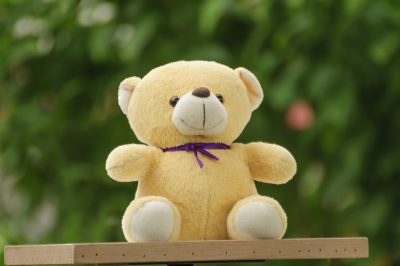Having creamy background blur in portraits makes an amazing image. It separates your subject from the background, demanding your viewer’s eyes to look at the parts that are in focus only.
50 mm, f/1.6
Here are 5 ways that you can use to get nice background blur:
1. Open up the aperture
One of the most obvious things that you can do to get more background blur is to simply open up your aperture. Shooting at smaller f-stops will result in a shallower depth-of-field which would in turn, give you better background blur. If possible, use a fast prime lens that can go to f/1.8 or even f/1.4 for that extra creamy background look.
2. Use a longer lens
70mm, f/5.6
300mm, f/5.6
Another way for getting great background blur is to shoot with a longer lens. 85mm prime lenses are a favorite amongst portrait photographers, but 135mm and even 200mm prime lenses are well sought after for their amazing degree of subject-background separation that they are capable of producing in an image. The background compression of a long lens also allows you to pick a “cleaner” part of the background to use, as it effectively eliminates background details which may be a distraction from your main subject.
3. Move your subject further away from the background
Subject close to background. 50mm, f/1.8
Subject far from background. 50mm, f/1.8
You will not be able to get a nice out-of-focus background if the background is just 2 to 3 feet away from your subject. Putting more distance between your subject and the background will give you greater background blur
4. Move closer to the subject
Camera far from subject. 70mm, f/2.8
Camera close to subject. 70mm, f/2.8
For more background blur, you can opt to go closer to your subject. For portraits, you can consider a head-shot instead of a half-body shot if you would like to achieve more background blur. In the 2 images below, I am using a book as a subject to demonstrate this effect:
5. Use a camera with a larger image sensor
Huawei P9, Smartphone. 27mm, f/2.2
Nikon D750, Full Frame DSLR. 26mm, f/2.8
Cameras with larger image sensors will naturally give you better background blur than cameras with smaller image sensors. In the images below, you can see the comparison between the Huawei P9 and the Nikon D750:
Before I end this article, here’s a fun fact: Most smartphones actually do not have adjustable apertures. The aperture setting in most smartphones are actually just using an algorithm to add artificial blur. Go ahead and try it out! Let us know what you think about these tips in the comments section.
Till next time. Cheers.
Article by,
Steven Wong










Comment (0)